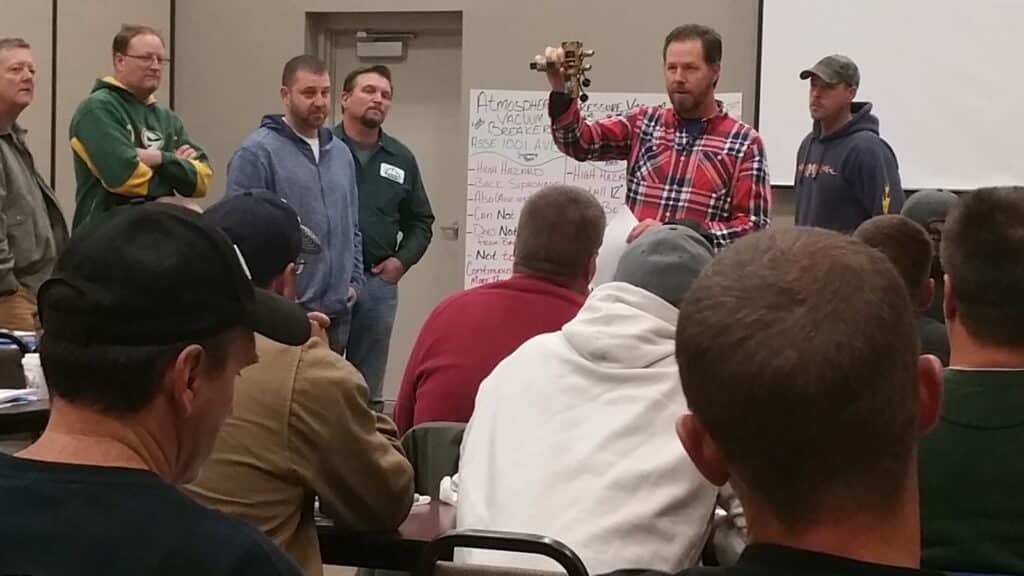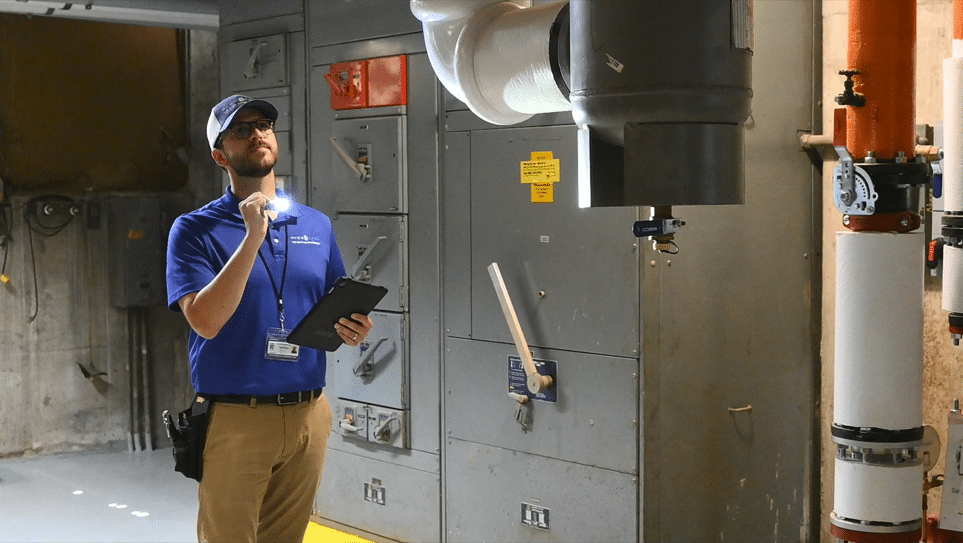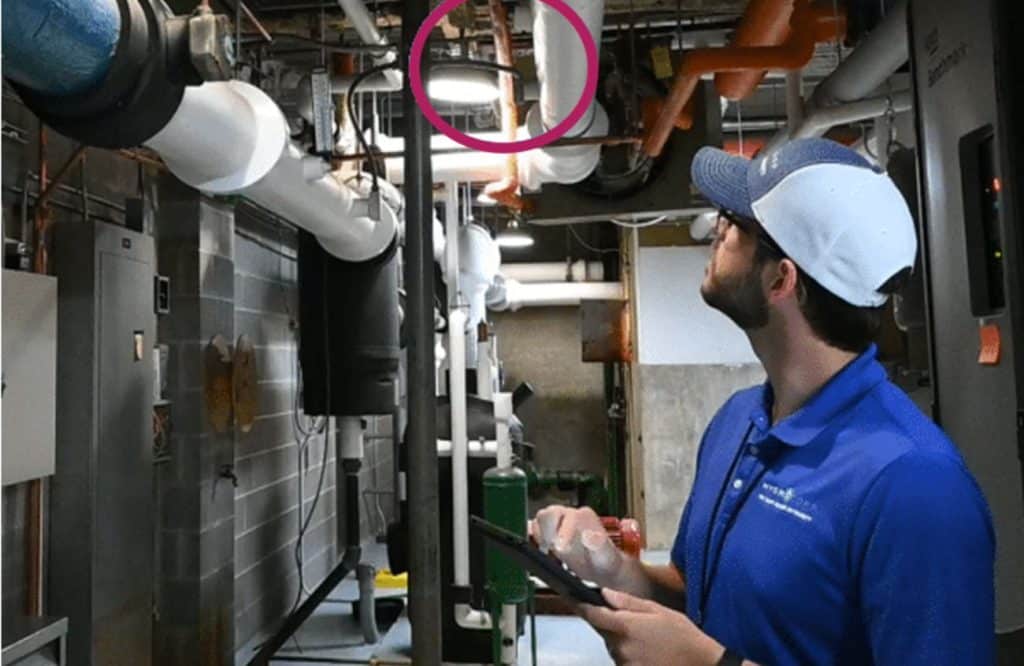Summary
- By investing in the education of younger employees, water utilities can secure a future where their community water system is run by a competent and well-educated staff.
- By focusing on niche topics like Backflow Prevention and Cross-Connection Control, up-and-coming waterworks professionals can chart a unique and valuable career path.
- While AI and other software grows smarter every day, it will never be able to locate undetected Cross-Connections with onsite, in-person surveys, demonstrating the need for ongoing need for expertise on this subject.
- Give this free Cross-Connection Basics Knowledge Book to all new water department to your employees and water department decision makers.

Ensuring the safety of our public water supply demands a deep understanding of Backflow Prevention techniques and Cross-Connection Control strategies. It’s not just about compliance; it’s about safeguarding public health today, tomorrow, and all the tomorrows to come. This is why public water utilities should prioritize the implementation of ongoing education in the topics of Backflow and Cross-Connection Control with anyone staffed at their utility under the age of thirty. Topics like Backflow 101, Backflow Preventer Identification, and Cross-Connection Control Survey Procedures are unfortunately not common knowledge and any new or younger staff members may not even be familiar with these terms, depending upon their specific role at the utility. Furthermore, not only will fostering in-house expertise in Cross-Connection Control (CCC) provide a more well-rounded workforce that can help mitigate any risks from potential Backflow contamination, but it can also help transform entry-level utility staff into seasoned career waterworks employees.
Backflow 101: Understanding the Basics
Understanding the fundamentals of Backflow, its causes, and its implications is essential for anyone working in the waterworks industry. When we refer to “Backflow 101”, we are speaking to any sort of introductory materials or courses that cover the basics, including types of Backflow, common sources of contamination, and the importance of prevention measures. For young employees entering the industry, an introductory course on Backflow serves as the foundation upon which they can build their expertise. By introducing this topic early and helping younger employees grasp the underlying principles of Backflow, they lay the groundwork for more advanced learning and practical application in the field.
Recognizing Backflow Prevention Devices & Assemblies
Backflow Prevention (BFP) Devices and Assemblies are critical plumbing fixtures located throughout all public water distribution systems. Identifying and understanding the different types of devices and assemblies is crucial for effective maintenance and inspection practices. From Air Gaps to Reduced Pressure Zone Backflow Prevention Assemblies, each different preventer has a specific use case in preventing backflow incidents – not all devices or assemblies can withstand continuous pressure, for example. Not all devices or assemblies are approved by the ASSE (American Society of Sanitary Engineers) to withstand Back Pressure. Young utility employees should familiarize themselves with BFP identification early in their careers. By learning to recognize, understand the function of, and know the use cases for various preventers, they become better equipped to conduct thorough inspections and identify potentially dangerous piping arrangements.
Conducting Comprehensive Cross-Connection Control Surveys
Cross-Connection Control surveys are integral to identifying potential hazards and implementing preventive measures. These surveys involve assessing the plumbing systems of residential, commercial, and industrial properties to identify cross-connections and backflow risks. Conducting CCC surveys requires a combination of technical knowledge, attention to detail, and effective communication skills. Young employees should learn and participate in CCC survey activities to deepen their understanding of Cross-Connection Control principles. By participating in field surveys alongside experienced professionals, they gain practical experience and exposure to real-world scenarios. Moreover, involvement in CCC surveys highlights their importance and illustrates by experience the nature of undetected and unsafe Cross-Connections.

AI is Here to Stay, but Software Can’t Do It All
AI software, and software in general, is unable to detect potentially hazardous Cross-Connections within potable water plumbing systems due to the necessity for visual inspection and physical verification. Unlike tasks that rely solely on data analysis, identifying Cross-Connections requires in-person, onsite, human activities. Physical verification is crucial to confirm the presence of cross-connections, existing backflow prevention methods, and the potential risk levels. While AI can support data analysis, its limitations in conducting visual inspections and physical verifications render software incapable of detecting unprotected Cross-Connections. Therefore, the human element remains indispensable in ensuring the safety and integrity of potable water systems.
Fostering In-House Expertise & Investing in Young Talent
Empowering young utility employees to become CCC experts is not just beneficial for individual career growth; it’s also advantageous for the utility as a whole. By investing in ongoing education and training in backflow prevention topics, utilities can cultivate a crew of knowledgeable and skilled professionals capable of addressing evolving challenges in water management. Mentorship also plays a pivotal role in fostering in-house CCC expertise. Pairing young employees with seasoned veterans allows for knowledge transfer and skill development through hands-on learning experiences. Through mentorship programs, young employees receive guidance, support, and encouragement as they navigate in their careers towards becoming experts in Cross-Connection Control in the waterworks industry.
Transform Entry-Level Staff into Waterworks Professionals
For entry-level utility staff, the journey to becoming waterworks experts begins with a commitment to ongoing learning and development. By immersing themselves in Backflow related topics, they lay the groundwork for expertise in Cross-Connection Control and Backflow Prevention and carve out a niche for themselves in the waterworks industry. Fostering in-house CCC expertise among young employees not only enhances individual career prospects but also strengthens the utility’s capacity to safeguard water quality and public health. Through education, mentorship, and hands-on experience, young professionals can emerge as invaluable assets in the ongoing effort to maintain a safe and reliable water supply for their communities.

